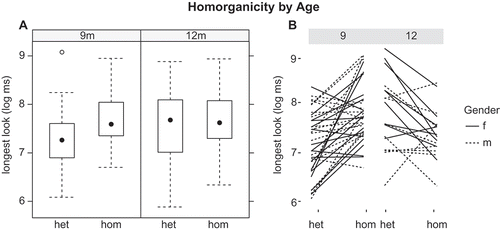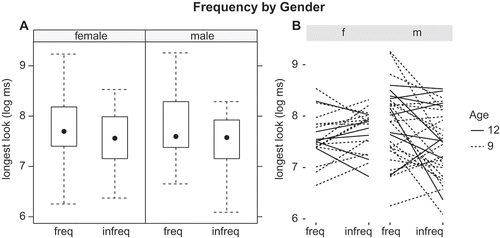Figures & data
Figure 1. Log of the longest looking time for heterorganic and homorganic stimuli at 9 months (left) and 12 months (right) of age. (A) Boxplots indicating group results with interquartile range group medians. (B) Individual results. Lines indicate individual data points (solid: female, dotted: male subjects).

Figure 2. Log of the longest looking time for frequent and infrequent stimuli in girls (left) and boys (right). (A) Boxplots indicating group results with interquartile range group medians. (B) Individual results. Lines represent individual data points (solid: 12 months, dotted: 9 months).

Table A1. Acoustic properties of the stimuli.
Table A2. Stimulus syllables per condition with frequency values for phonological features.
Table A3. Stimulus syllables per condition with frequency values for the frequency condition.
Table A4. Overview of final model for each condition.
Table A5. Interquartile range. Median, and N for each condition for total looking times (ms).
Table A6. Interquartile range, median, and N for each condition for longest looking times (ms).
